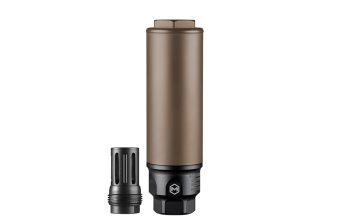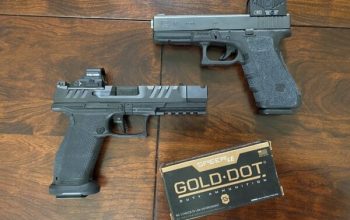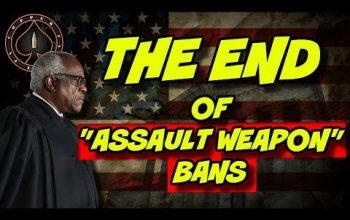ShotSpotter has failed to live up to its promises in another major US City, according to the Comptroller of New York City. The Comptroller’s Office recommended that the City not renew its contract with the David Chipman-linked company when it expires in December.
ShotSpotter is an acoustic system that claims to be able to determine gunshots and pinpoint the shooter’s location. The system consists of multiple microphones placed around a city on light poles. When the system detects a loud noise, artificial intelligence (AI) analyses the sound to determine if it is gunfire. It then triangulates the sound and sends an alert to a ShotSpotter monitoring center. At the center, a human will review the recording and dispatch police if they believe it is not a false positive.
Although the company claims a 97{ebf8267f808eac43d24742043db51eeeb004db6334271e1bb6fe8c21c7925753} accuracy rating, real-world situations show the opposite is true according to multiple cities. In 2021, the Chicago Office of the Inspector General (OIG) reported a 91{ebf8267f808eac43d24742043db51eeeb004db6334271e1bb6fe8c21c7925753} failure rate for the $33 million system funded by Chicago taxpayer dollars. Even though the IG Office had serious concerns about the system, Chicago Mayor Lori Lightfoot extended the contract for another three years. The perplexing decision left many to wonder why the mayor would renew a contract for a system that only works 9{ebf8267f808eac43d24742043db51eeeb004db6334271e1bb6fe8c21c7925753} of the time. Other cities like Atlanta and Portland have dropped the ShotSpotter system for giving too many false positives.
The New York Comptroller has raised new red flags for the system. According to the Democrat-run Office, ShotSpotter has an 87{ebf8267f808eac43d24742043db51eeeb004db6334271e1bb6fe8c21c7925753} failure rate. Loud noises, such as backfiring cars, construction, and fireworks, can fool the system. In only eight months, the system alerted the NYPD of 7,262 incidents that turned out to be false positives. Dispatching police on wild goose chases ties up valuable resources and wastes taxpayers’ money. Instead of catching criminals, the system is delaying police from responding to real crime scenes.
“ShotSpotter claims to be a proven detection system’ that is ‘faster and more accurate,’ but our audit found that 87 percent of the time, ShotSpotter is sending NYPD officers in response to loud noises that don’t turn out to be confirmed shootings,” said Comptroller Brad Lander. “The evidence shows that NYPD is wasting precious time and money on this technology and needs to do a better job managing its resources. Chasing down car backfires and construction noise does not make us safer.”
Even though the system has been shown to be unreliable, the New York Police Department (NYPD) still supports it. The NYPD rejected three recommendations from the Comptroller’s Office and will continue using the system, citing that the data on false positives were irrelevant to the decision on whether to renew the contract or move on from the system.
The rejected recommendations were:
Recommendation #1: Decline to renew the ShotSpotter contract when it expires in December 2024 without first conducting a more thorough performance evaluation, considering the very low rates of confirmed shooting incidents detected, and factoring in the extensive NYPD officer time spent responding to alerts not ultimately confirmed as shootings.
Recommendation #2: Develop more meaningful performance standards of ShotSpotter’s accuracy that better factor in the very high rate of alerts not ultimately confirmed as shootings.
Recommendation #3: Collect and publish relevant data to increase transparency, including the number of published alerts, percentage of alerts that result in confirmed shootings, the number of false negatives and missed incidents, time and staff costs spent responding to alerts that are not ultimately confirmed as shootings, and the relative response times to ShotSpotter alerts versus 911 reports of shots fired outside.
Comptroller Lander was disappointed with the decision by the NYPD. He was perplexed by the Department’s dismissal of the data. Lander believes the city’s resources could be better used to fight crime within the city and suggests that ShotSpotter is not adequate to fight crime.
“The NYPD’s response to these audit findings is disappointing and reflects a disinterest in using data, effective performance metrics, and transparency to improve public safety,” Lander said. “With a thorough evaluation before deciding whether to renew this multi-million-dollar contract, better performance standards, and more transparency, the NYPD could deploy its resources – especially its officers’ time – far more effectively.”
This situation isn’t the first time ShotSpotter has faced controversy. Vice News discovered a pattern of ShotSpotter altering its data to match police accounts. For example, police in Rochester, New York looking for a car, stopped the wrong vehicle. Police shot at the car’s passenger, Silvon Simmons, four times, hitting him three times in the back. Police claim that Simmons fired a gun at the officers on the scene.
ShotSpotter only picked up two shots, and there was no physical evidence of Simmons shooting at the police officers. In fact, Rochester, New York, refused to test Simmons’ hands and clothes for gunshot residue when he insisted he never fired at the officers. The police asked the company to find seven shots. ShotSpotter claimed after reanalyzing the audio that there were indeed seven shots fired.
Police charged Simmons with attempted murder even though police could not find any casings or any bullets. Simmons refused to plea bargain and pled innocent. His lawyers requested the audio files from ShotSpotter, but the audio files mysteriously disappeared, and all backups also went missing. A jury acquitted Simmons on the murder charges. A judge later overturned his conviction for possession of a gun. The judge pointed to ShotSpotter’s unreliability.
ShotSpotter continues to be the darling of the anti-gun community even though it is shown to be inaccurate at best and totally useless at worst.
About John Crump
John is an NRA instructor and a constitutional activist. Mr. Crump has written about firearms, interviewed people from all walks of life, and on the Constitution. John lives in Northern Virginia with his wife and sons. Follow John on Twitter at @crumpyss, or at www.crumpy.com.



